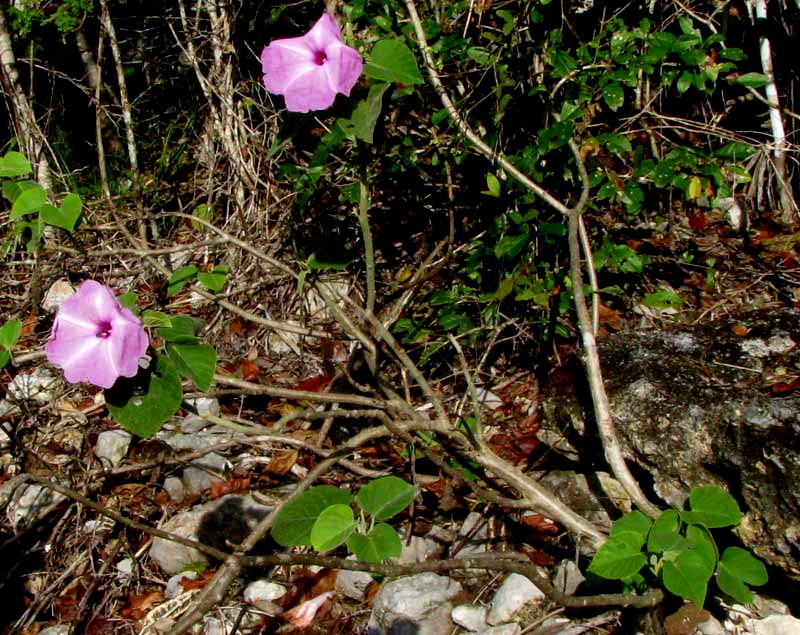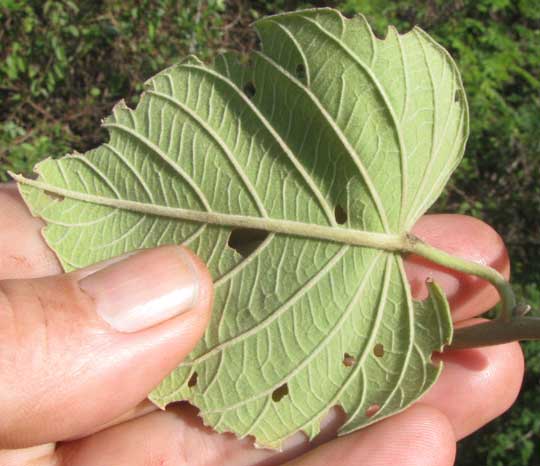Excerpts from Jim Conrad's
Naturalist Newsletter

from the January 22, 2012 Newsletter issued from Hacienda Chichen Resort beside Chichén Itzá Ruins; limestone bedrock; elevation ~39m (~128ft), N20.675°, W88.569°; central Yucatán state, MÉXICO
A WOODY MORNING-GLORY
We've already met the Morning-glory Tree, IPOMOEA CARNEA, planted in gardens. You can see one in full flower along the Paseo Montejo in Mérida, and a white-flowered form in a garden nearby in Pisté at www.backyardnature.net/yucatan/tree-m-g.htm.
Ipomoea carneas are native, wild-growing plants here, and nowadays they're flowering. Their pinkish, saucer-size blossoms are especially conspicuous now because most morning-glory vines are past flowering, though certainly not all. Above, you can see a wild one emerging from a rock outcrop beside the little road between Pisté and Yaxuná to the south.
A shot of a blossom's face showing a dark center and the tops of two anthers poking from the throat is below:

A longitudinal section showing the spherical stigma head among five stamens of very different heights is below:

A view of a leaf's soft, velvety undersides is below:

Leaves on planted Morning-glory Trees I've seen have been narrower and more slenderly long-pointed than these, plus the ones I've seen planted are really bushes, while the ones growing in the woods here have woody, bushy bases, but their branches elongate until they become definitely vine-like.
That's because two different subspecies are involved. The planted shrubs with long-pointed leaves are Ipomoea carnea ssp. fistulosa; our currently flowering, wild, vine-tending ones with more heart-shaped leaves and with branches elongating and becoming viney, is IPOMOEA CARNEA ssp. CARNEA. In English I think of the later viny one as the "Vining Bush Morning-Glory."
I. carnea ssp. fistulosa, the planted bush, is native from southern Texas all through Mexico and Central America deep into tropical South America. In many tropical and subtropical countries it's escaped cultivation to become a serious invasive species, especially in low-lying areas along waterways. I. carnea ssp. carnea, our wild, vine-tending one, occurs only from southern Mexico south into South America, and it inhabits drier habitats than ssp. fistulosa.
As with many morning-glory species, the seeds of both Ipomoea carnea subspecies are toxic.